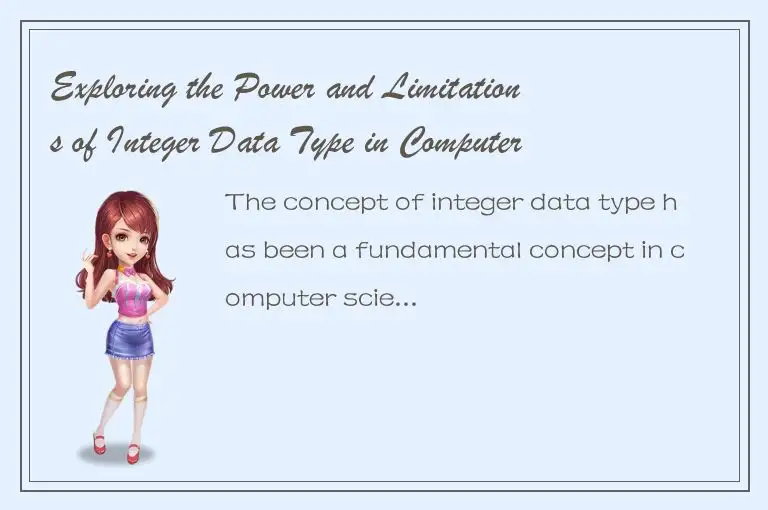The concept of integer data type has been a fundamental concept in computer science since its inception. The integer data type is a primitive data type that represents whole numbers, including positive and negative numbers. The integer data type is widely used in programming languages such as C, C++, Java, and Python, among others. It is essential for programmers to understand the power and limitations of the integer data type because it affects the accuracy, efficiency, and correctness of computer programs.

In this article, we will explore the power and limitations of the integer data type in computer science.
Power of Integer Data Type
The integer data type has many advantages. Some of the key powers of the integer data type are:
1. Precise Math Operations
The integer data type can represent a wide range of whole numbers with precision, including negative and positive values. This precision is useful when performing mathematical operations such as addition, subtraction, multiplication, and division. The integer data type performs these operations with high accuracy, leading to accurate and reliable results.
2. Memory Efficiency
The integer data type is memory-efficient because it uses a fixed number of bytes to represent a whole number. For example, an integer data type that uses four bytes can represent any whole number between -2,147,483,648 and 2,147,483,647. This memory efficiency is particularly useful when dealing with large datasets since it minimizes the amount of memory required to store and retrieve data.
3. Easy to Use
The integer data type is easy to use, especially for beginners. Most programming languages have built-in functions and operators for performing mathematical operations on integers, such as addition, subtraction, multiplication, and division. This ease of use makes it easy for programmers to work with integer data type, leading to faster development time, and simpler code syntax.
Limitations of Integer Data Type
The integer data type also has some limitations that are worth noting. Some of the key limitations of the integer data type are:
1. Limited Range
The integer data type has a limited range of values that it can represent accurately. For example, a 32-bit integer data type can represent a range of -2,147,483,648 to 2,147,483,647. If a programming language requires larger values, such as in scientific or financial calculations, the integer data type may not be suitable. To overcome this, other data types such as long integers or floating-point numbers can be used.
2. Division by Zero
Division by zero is an undefined operation in mathematics because it leads to infinity or undefined values. However, dividing integers by zero in programming languages can lead to runtime errors or crashes. Many programming languages do not allow division by zero, and will throw a runtime exception or error.
3. Overflow and Underflow
An overflow occurs when the value of an integer exceeds the maximum value that the data type can hold. Similarly, an underflow occurs when the value of an integer falls below the minimum value that the data type can hold. This situation leads to undefined behavior, and the resulting value may not be correct. Overflow and underflow need to be handled carefully in programs that deal with a high volume of data or use complex calculations.
Conclusion
In conclusion, the integer data type is a powerful and fundamental concept in computer science. Its precision and memory efficiency make it a suitable choice for various programming tasks. However, it has some limitations, mainly related to its limited range, division by zero, and overflow/underflow issues. As a programmer, it is essential to understand these limitations and work around them to ensure accurate and efficient program execution.




 QQ客服专员
QQ客服专员 电话客服专员
电话客服专员